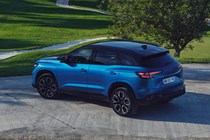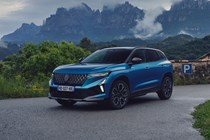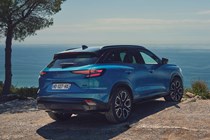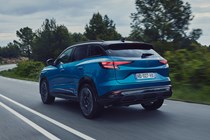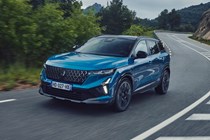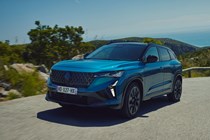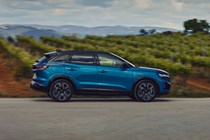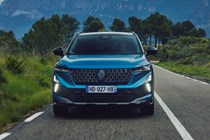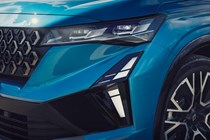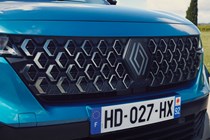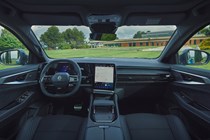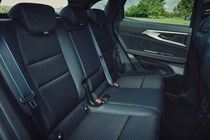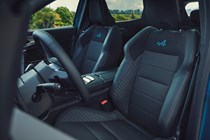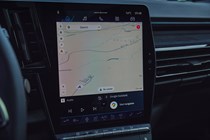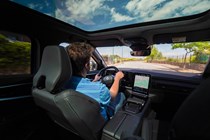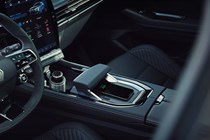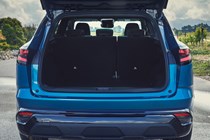
Renault Austral long-term test
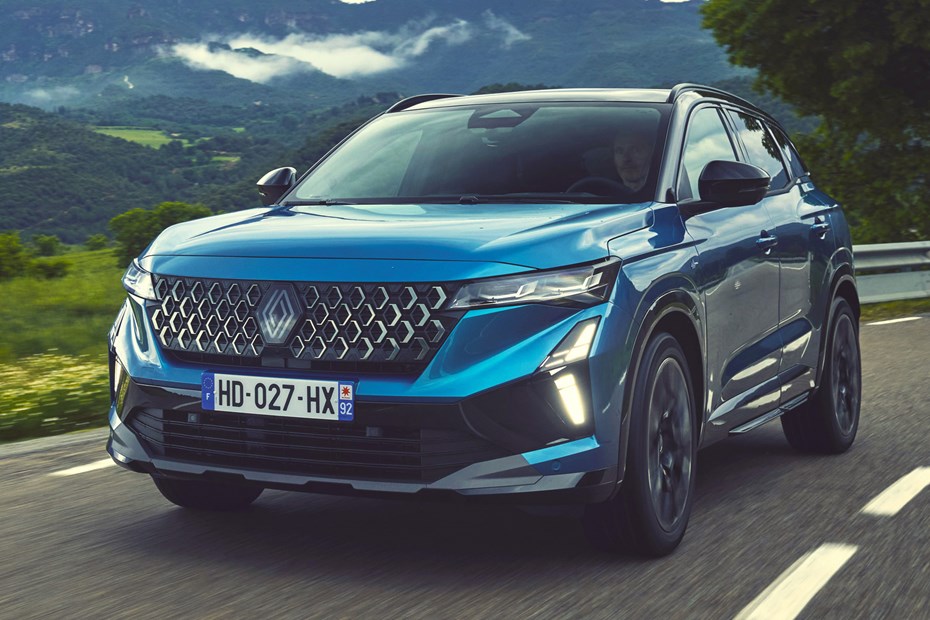
Eye-catching styling and seamless interior tech, combined with punchy performance and 60mpg. The Renault Austral promises much, and we’ll be testing how well it can deliver it over the next six months.
Reports by Adam Binnie
Update 1: Welcome
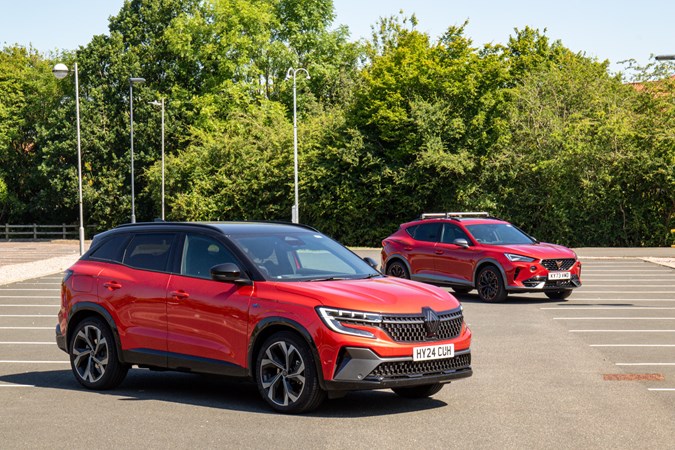
Plug-in hybrid economy without having to plug it in? Can it be too good to be true? We welcome the Renault Austral and its intriguing powertrain
It seems I’ve got a bit of a thing for red crossovers, as I wave goodbye to the Cupra Formentor and welcome this considerably brighter Renault Austral.
Digging back into the past reveals I’ve had a decent run of similarly toned SUVs – a Volvo XC40, and a Mazda CX-3 and CX-5, all in firey hues.
I feel pretty well qualified then to say that this particular Flame Red is my favourite of all of those, which is a bit controversial when you consider how iconic Mazda’s Soul Red has become. But you can spot the Renault from the other side of a car park with ease, such is the vibrancy of its paintwork.

It’s really quite a good looking car, with chunky proportions and striking C-shaped head and tail lights. This theme continues inside too with the best incarnation of Renault’s upright screen I’ve seen to date, and plenty of soft-touch and technical-looking fabrics.
All of this has somewhat softened the blow of my last long termer’s passing. In my final Cupra Formentor update I spent about 1,000 words explaining how much I loved it and how well it fit into family life.
It’s fair to say that’s a hard act to follow, and I didn’t want that to influence my early opinion of the Austral. This car replaces the Kadjar, which always felt like it lived in the shadow of the Nissan Qashqai that it was mechanically based on.
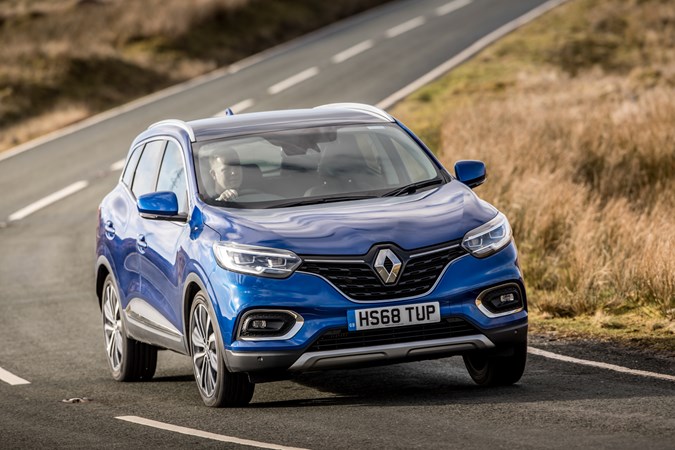
That was a problem at a time when the Qashqai was already the default crossover choice for a lot of family car buyers. Nissan absolutely nailed that brief and got to the market before a lot of its major rivals and enjoyed great success off the back of it.
The Austral feels much more its own car, and in the years that have passed since its predecessor arrived, the mid-sized family SUV range has absolutely exploded to the point where I can talk about how good this Renault is without comparing it to a Qashqai.
And it is good – really good in fact. I’m jumping the gun a bit here but I didn’t need to worry about my first impressions being corrupted by the Cupra’s passing. The talents are more than skin deep, thanks to brilliant, seamless connectivity of its interior tech, a punchy engine that promises 60mpg, and surprisingly cosseting cabin noise levels and suspension.
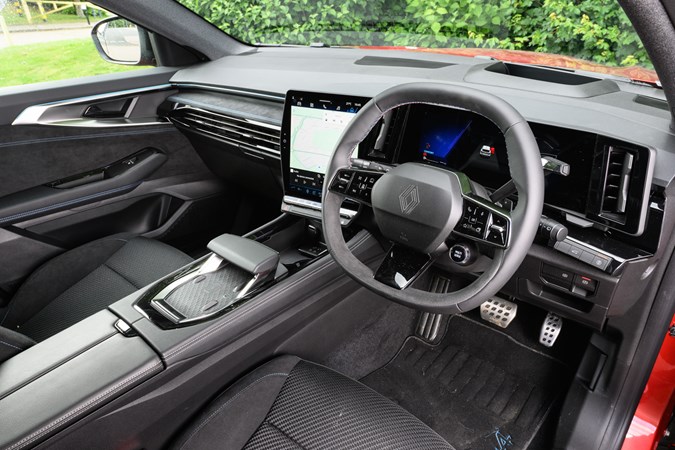
That last point may stand out to you if you’ve read any other Austral reviews. When this car was launched it had firm suspension and many road testers (including those on Parkers) rightfully pointed this out.
This 2024 model has fixed that problem with a much more forgiving set up. It’s still quite poised, I reckon it sits somewhere between the Cupra’s comfort and sport modes, meaning it’s well balanced for everyday use.
I’m also really intrigued by the engine – it’s a conventional hybrid (so you don’t need to recharge the battery) and Renault says it can do 80% of normal driving in EV mode. I’ve not done enough miles to test this out yet but anecdotally I’ve noticed it moves under electric power way more than I was expecting. That means its often quiet and wafty, with a smooth power delivery.
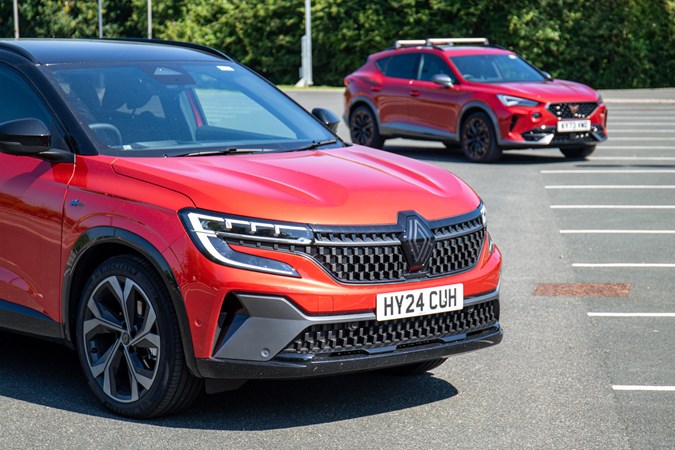
Finally, there’s the additional practicality a more traditional, tall SUV offers over the Formentor’s crossover hatchback shape. It has a 430-litre boot – admittedly only ten more than the Cupra, but if you slide the rear seats forward this increases to 555-litres. How practical it is to do that day-to-day we’ll have to see.
So things are looking bright from the off. I’m really intrigued to see how efficient the Austral can be (especially when I attach my bikes to the roof) and what it gives away in order to deliver that cost saving per mile. From my initial impressions, that appears to be very little.
Update 2: Spec inspector
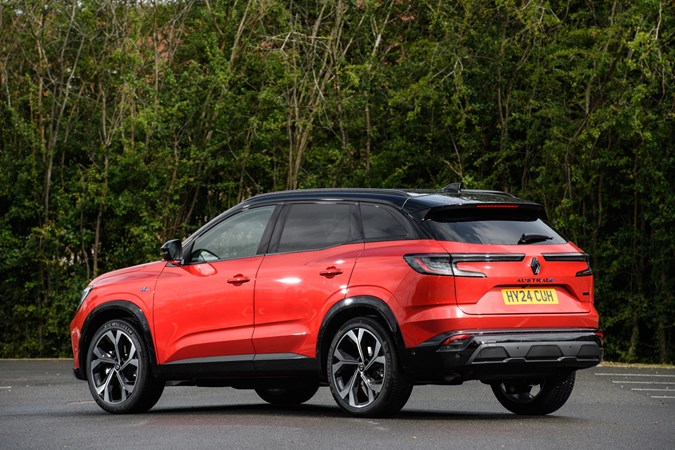
A pretty straightforward engine and trim range makes for a pretty straightforward buying decision – just get the one we’re running here
On the face of it this should be a short update – there’s one engine option, and three trims. We’ve got the middle one here, called Techno Esprit Alpine. I’ll explain what that comes with (and what it doesn’t) as we go, but TL;DR, I think it’s the best option.
In the brochure’s topline numbers, Renault highlights the fact the Austral has 30 advanced driver assistance systems, 984cm2 of screen and head up display space, and 555-litres of luggage capacity.
There’s an asterisk against these figures highlighting the fact that they’re dependent on trim, and so you instantly think “oh here we go, that’ll be for the top spec car only” but it seems like we’ve got most of them as standard. UK models seem to be very well equipped.
All three trims get the same 12-inch main screen, 12.3-inch driver’s screen and 9.3-inch head up display. Same for the 555-litre boot, although that’s dependant on the rear seats being slid forward like I mentioned before.
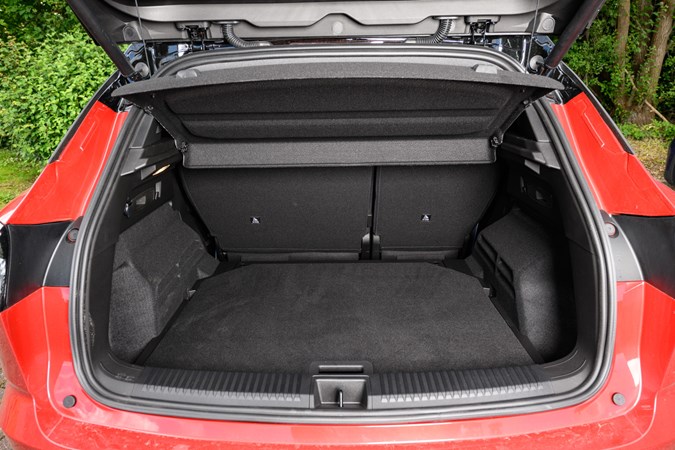
There does however appear to be a slight disparity between the safety systems on offer. Base spec Techno gets most of it (see the highlights in the bullet points below). Upgrading to Techno Esprit Alpine gets you active driver assist, which is basically a more sophisticated active lane keep and adaptive cruise control system (you get basic adaptive cruise as standard).
Standard safety kit
• Front & rear active emergency brake assist
• Pedestrian alert
• Distance warning alert
• Emergency lane keep assist
• Active emergency braking system
• Driver attention alert with drowsiness warning
• Speed sign recognition
• Adaptive cruise control
• Rear view camera
• Automatic matrix LED vision headlights
You’ll need the top spec car if you want hands free parking and a 360 degree camera. I’ve never been impressed with the former, but the latter is pretty useful, especially if you live in a city or want to keep those wheels kerb-damage free.
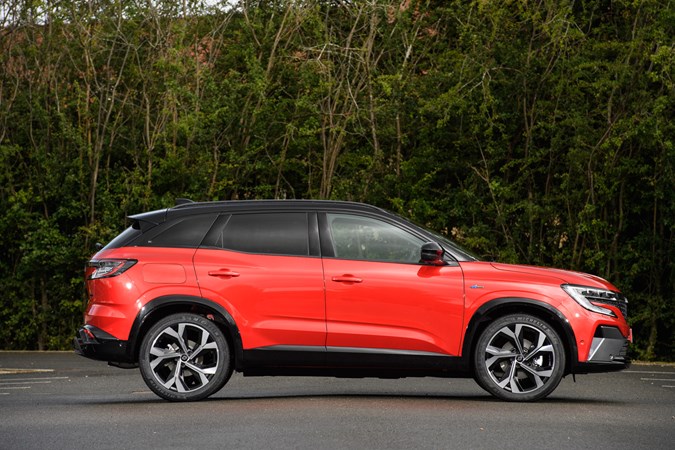
Elsewhere the middle trim we’ve got here looks like the sweet spot in terms of looks as well as kit – you get smart 20-inch wheels (an upgrade over the standard 19s) plus fancier fabric on the seats, Alcantara on the dash, and eye-catching red, white and blue stitching on the wheel. A decent upgrade over the slightly dull looking Techno interior.
Handy gadgets I think you’ll appreciate in the mid-spec car include a hands-free electric boot, heated front seats (massage and powered adjustment on the driver’s side too), and a heated steering wheel.
Upgrading to the top trim gets you the safety tech mentioned above, a panoramic roof, 12-speaker Harman Kardon stereo, and upgraded door mirrors with memory function.
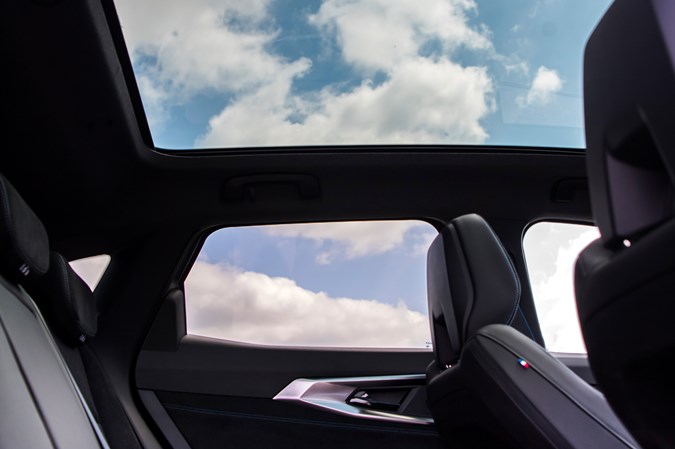
All in all while the top spec car gets some nice upgrades, it doesn’t look any different to the middle trim we’re running, which I think represents the best bang for buck in the Austral range.
I am a sucker for a nice stereo, but in all honesty the six speaker Arkamys audio system that comes as standard does a surprisingly good job. I could also be convinced by a panoramic roof (I like being able to keep an eye on my bikes when they’re up there) but again that’s a “nice to have” rather than essential.
Something that doesn’t get much of a mention anywhere, curiously, is the four-wheel steering system that only comes with top spec cars. This shrinks more than a metre from the turning circle by angling the rear wheels during tight turns. It also improves stability at high speed.
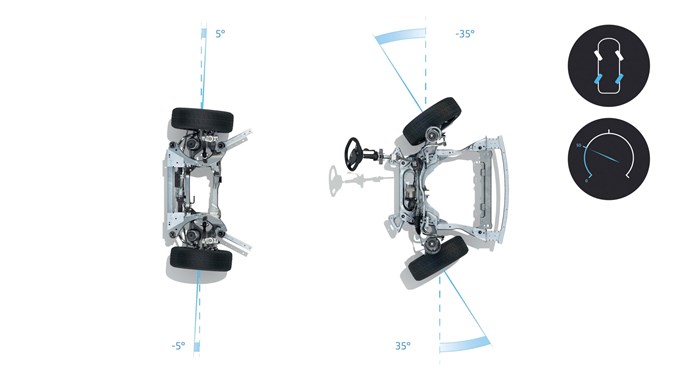
I can’t say I’ve noticed the Austral having a particularly bad turning circle but again if you live in a city this could be a really useful upgrade. It’s odd therefore that Renault doesn’t make it more of a selling point. Further investigation required.
Update 3: Performance and handling

Another relatively straightforward one, because there’s only one engine choice, and as you’ll discover in this update, it’s really rather good
Cars that come with one engine option are largely defined by it – whether it’s for fuel economy reasons like a Toyota Prius, or symphonic performance like a Porsche Carrera GT.
So where does the Austral sit along that scale? Well according to Renault, somewhere along the middle. They claim this car offers the best performance to MPG ratio in its segment.
That’s an interesting angle and one I’ve not really heard used before. Yet after only a couple of drives it was also the characteristic I’d use to describe the car when asked what it was like – it seems to get much better fuel economy than you’d expect, considering the way it goes.
Let’s dive into the details – the Austral is the first vehicle to use a new Renault platform, which brings together the E-Tech hybrid engine, Multi-Sense driver modes and optional 4Control four-wheel steering tech (which my car doesn’t have).

Combining a 1.2-litre, three-cylinder petrol engine and electric motor, the E-Tech unit develops 200hp and promises 60.1mpg. I saw 50ish with almost no effort to drive economically, and between 40-45mpg once I’d put the roof rack on (more on this in a later update).
That’s genuinely impressive and largely, I suspect, down to how often the car seems to be in EV mode – twice as long as other hybrids, says Renault. It always starts up on battery power (this has a 1.7kWh capacity), stays that way in town, and usually even up to higher speeds on dual carriageways or motorways.
Renault says you can expect 80% of city driving to be EV powered, but in my experience, that’s underplaying it a bit – but maybe if you live in a bigger city than me you’ll find the limit earlier. Either way, a diesel-like claimed range of 683 miles between fill-ups means I don’t go to the petrol station anywhere as frequently as I did with my last Cupra Formentor.
The Austral has the best conventional hybrid system I’ve driven in years. Sure, there are alternatives that offer better economy at the expense of performance (and vice versa) but the balance here is remarkable.
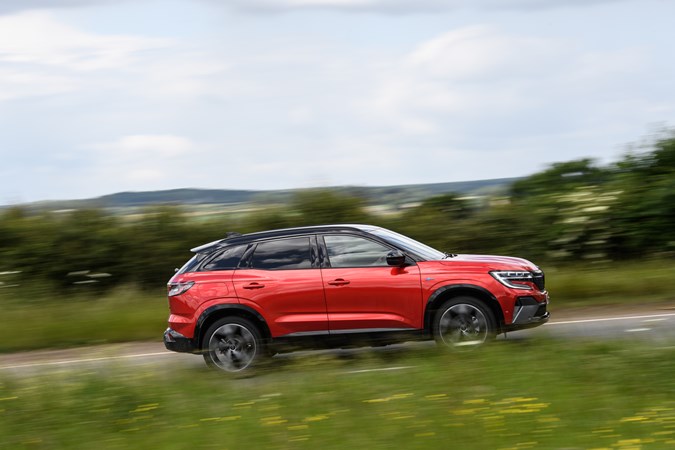
How does is do it? Well, this is quite an unconventional, conventional hybrid, using a complicated set up I first saw debuted years ago in a Clio. Renault’s engineers said they couldn’t build an EV with diesel-like range for less than £30,000, and so set about creating a hybrid that could tick all of those boxes, of low CO2, high mileage, and great value for money.
The solution was quite complicated, to say the least, and took up a lot of space in the engine bay. So much so that there was no leftover room for a CVT transmission like most of its hybrid rivals, or indeed a clutch. So a motor shifted the gears for you instead.
Even weirder, it had two gears for the electric motor, four for the combustion engine, and neutral gears for both. That meant it could do all sorts of clever things like start up and pull away in EV mode, and then disengage the electric drivetrain on the motorway.
So what? Well the Austral has an evolution of this drivetrain, and most pertinently, it’s significantly better to drive. I liked the old set-up because it was clever and that meant I could forgive it for being a bit, let’s say, inconsistent in its delivery. It was also much better than a CVT.
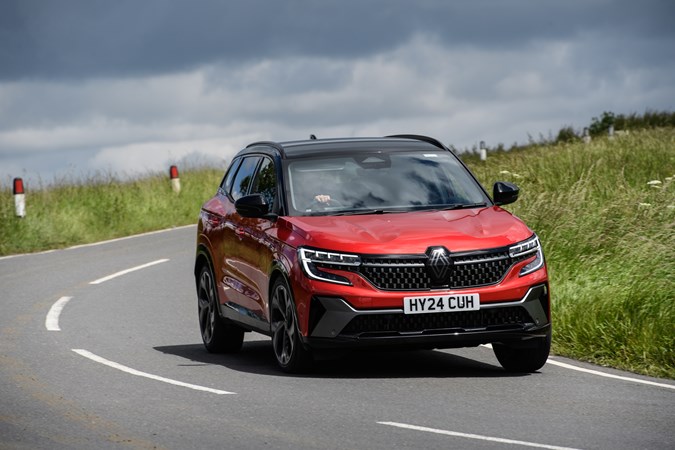
But you needed to drive it the way it wanted to be driven to get the best from it, and you were constantly aware of something different happening in the engine bay every time you pressed the gas pedal.
The Austral is nothing like this. It pulls away smoothly in EV mode and when you demand more power or reach its speed threshold, the petrol engine kicks in to fill the gap. If you concentrate, you can feel it happening, but generally speaking the engine’s machinations fly below the radar.
It’s punchy in its power delivery and at times feels like it’s putting out more than the claimed 200hp. It’s also incredibly quiet (or it was until I put a roof rack on it) with barely any engine noise in the cabin even at cruising speeds.
The brake regeneration is powerful too, working down to an almost-stop in its most highest mode (selected using the steering wheel mounted paddles) meaning I’m able to drive for ages without touching the brake pedal at all.
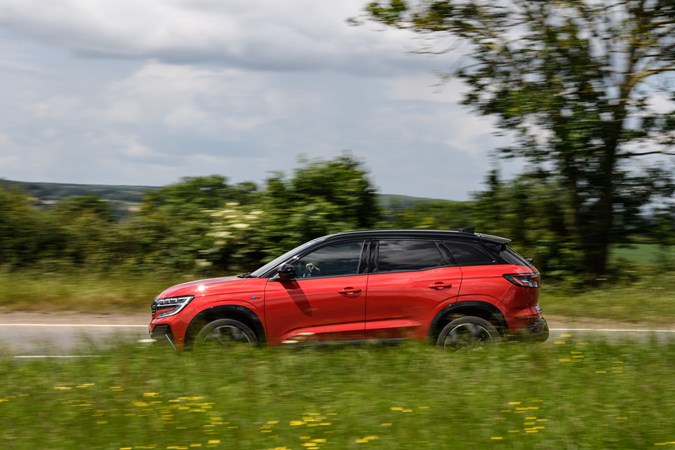
Gripes? I think the brake pedal moves in a bit when under full-regen, so it’s not always where you left it, and this can be a bit alarming. But you do get used to it. I also sometimes find the regen a bit inconsistent, when lifting off the gas pedal and expecting the car to slow, but nothing happens.
The column-mounted gear shifter needs a very definite tug to switch between forwards and reverse too, and on more than one occasion I’ve not quite managed it and nearly reversed into the car behind me when parking.
For the first few weeks of ownership I’d also try to select gears using the windscreen wiper stalk, because they’re quite close together. Usually when I had a car full of people who would find this very amusing. To be fair, there are few things in life funnier than accidental wiper activation.
What about the rest of the drive?
Renault talks a lot about the Austral’s “rigid body” (no need to show off) and earlier versions of this car were also very rigidly sprung. Models from 2024 onwards (like mine) have revised suspension because quite a lot of people said the original set up was too firm.
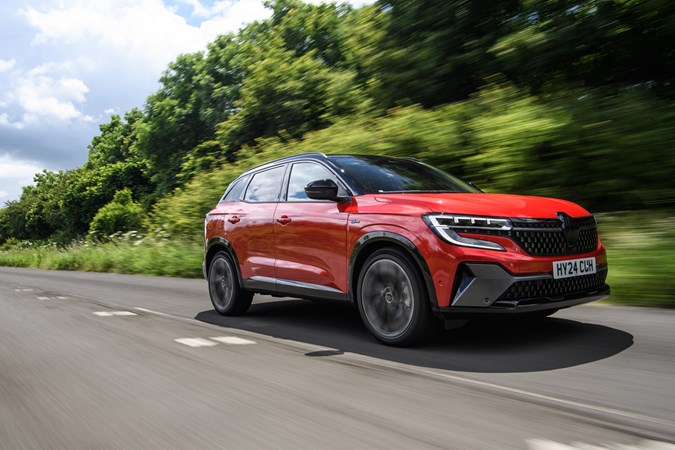
The revisions have been a success – there’s a sporting edge to it but on the whole, I think the Austral rides just fine, and corners nicely too. Altogether it’s a good compromise.
This will depend slightly on which version you get though. Normal two-wheel steer cars get a torsion beam on the rear, which Iconic Esprit Alpine cars with four-wheel steering get a more sophisticated multi-link set up. Generally speaking, that type of axle is much better at absorbing bumps on one side of the car, such as when you drive through a pothole.
Four-wheel steering also slices into the turning circle, meaning you can swing the car round in 10.1 meters rather than 11.2 meters in the version I’ve got. Renault’s brochure doesn’t make a huge deal about this but I think if you live in a city (and frequently use multi-story car parks) picking the 4Motion four-wheel steer model would be a no-brainer.
All cars get the Multi-Sense driver modes though and these make a pretty big difference to the experience overall, taking in the steering effort and engine responsiveness as well as the lighting in the cabin.
There are three modes, Eco, Comfort and Sport, and for the first month or so when I was trying to get the most miles per gallon, I used the steering wheel mounted button to select Eco at the start of every drive. It’s definitely less responsive than either of the other modes, but not punitively so, and delivers a smooth and relaxing drive.
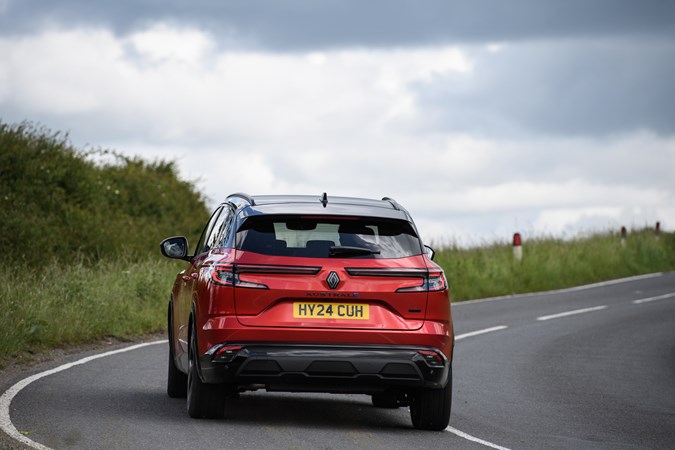
As time’s gone on though I’ve stopped bothering because it’s more fun in Comfort mode, and positively rapid in Sport. I can’t find much of a change in the handling (other than a heavier wheel), but this is another area where the Austral tries to appeal to a wide audience.
You can hustle this car quite satisfyingly, especially in the dry, where the strong grip levels and managed body roll give it a good level of agility. I find the traction control cutting in earlier than I would expect in the wet though – it’s not massively intrusive, but you can feel it working away underneath you to keep the car pointing in the right direction.
Verdict
I think the Austal is a bit of a crowd pleaser – the engine is plenty strong enough despite delivering surprisingly good MPG, while the revised ride does its best to smooth out broken tarmac, yet it harbours a mischievous edge that delivers just enough entertainment on the right road.
Update 4: Three go camping
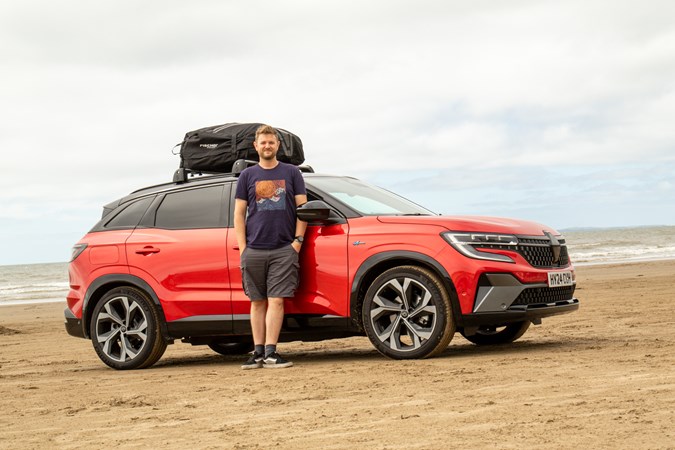
In which we explore the Renault Austral’s load-lugging capability on a family holiday in west Wales. Also I drive it onto a beach and then somehow manage to break the 12v battery. I can assure you the two things are not connected.
There can be no sterner test for a car (or a parent) than a camping trip with two children under ten. With a free week during the summer holidays, and a sense of our lives becoming increasingly short on adventure, some time in a tent beckoned.
Some caveats to that point. My wife’s the camper in our family and describes my idea of wilderness survival rather coldly, as “glamping”, because I take an airbed and a duvet rather than her woefully thin roll mat and sleeping bag.
But she was tied up with work all week anyway, so I could get away with making “Daddy Camp” as it became known, as glamourous as possible without any scrutiny. I’m talking about a fridge, air tent, and gazebo-kitchen-bootroom-annex. And an electric pitch to power it all.
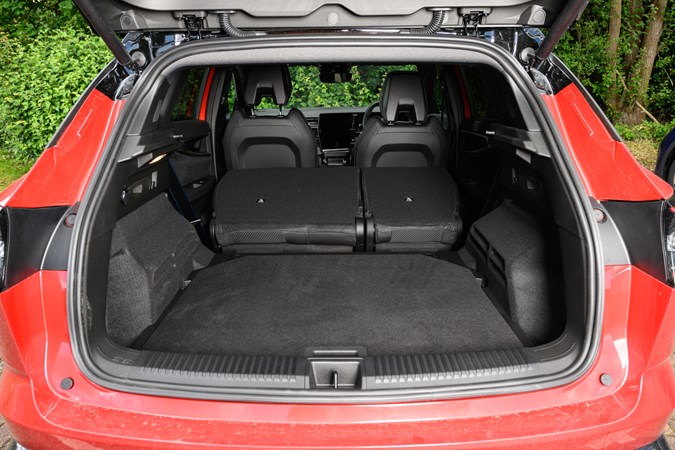
The trouble is, all of that stuff takes up an enormous amount of space in a car. The fridge alone nobbled half the boot, and the tent the rest. Granted, I was able to fold a seat down and make use of some of the rear cabin space, but it was still a tight fit.
There are remote handles to collapse the rear seats in the boot, but they don’t fold down completely flat, and then there’s a ledge to contend with. This isn’t a problem unique to the Austral by any means, and you do get sliding seats in the back to help prioritise bootspace over rear leg room, which is a nice nod to flexibility.
However, after reading my colleague Aaron’s superb roofbag buying guide, I decided that since I already had a pair of roofbars, a foldable storage solution I could fill with stuff and then store in the garage when not in use would be a sensible investment. I don’t have a lot of space in the garage, because of course it’s full of bikes.
You don’t actually need roofbars for a roofbag, but I wanted one with a firm base that bolts down solidly, rather than those ones that you just lash down. Mainly because I was nervous about sharp edges coming into contact with the roof itself – fine I suppose if your roofbag is full of soft things like clothes or bedding, but I intended to fill ours with (alongside other items) our camping chairs and a gazebo.
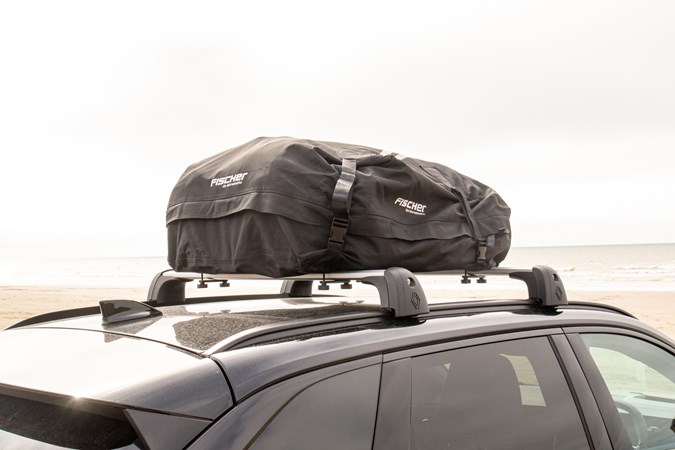
So, with the car suitably loaded with kit we set off for Pembrokeshire, staying with some friends for a night along the way to break up the journey. I don’t know if you’ve ever been to west Wales but there are two things you should know – firstly, it’s lush, and secondly, it’s a lot further away than you think.
That’s mostly because (a bit like Cornwall), once the main motorway ends, you’re thrust onto much more rural roads, and the relatively short last bit of the journey seems to take as long as the first. Distance isn’t a problem in the Austral – for cruising comfort, it has a massage function for the driver.
It’s not a deep tissue pummelling like my old Volvo XC60 used to offer, but it does mobilise your lower back and hips, so you don’t get uncomfortable on long drives. In combination with the supportive backrests and excellent seat heating, the Austral is great on a long haul.
Driver assistance tech including adaptive cruise control and lane keep assist also reduce your mental load somewhat on the motorway. I don’t always get on with these systems but they are much less annoying in the Renault than in other cars I’ve tested.
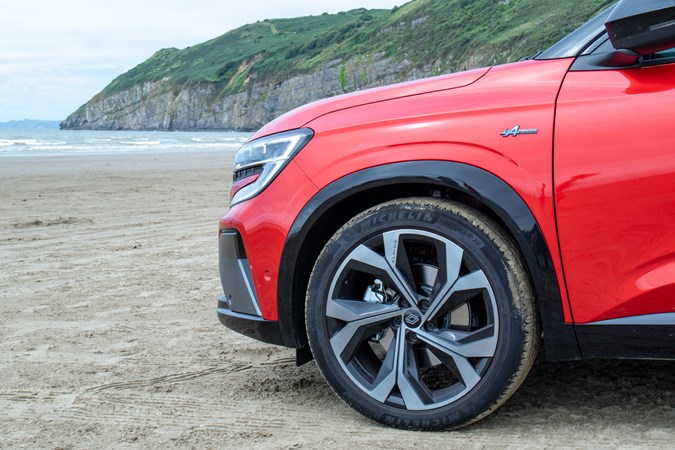
Fully laden as we were, I did notice a difference in the Austral’s performance (and fuel economy), as you’d expect. That said, it was still hovering over the 40mpg mark, which isn’t a million miles what I’ve clocked in fully charged plug-in hybrid cars.
To achieve that without having the faff of finding a plug on holiday is, I think, a really great result. It’s also not a slow car by any means and remained that way even loaded up, but I did notice the petrol engine revving a bit harder to get us up to speed on faster roads or when I needed to accelerate for an overtake.
I decided to take us on a not-very-on-the-way detour to Pendine Sands so we could stretch our legs a bit and also get the first (of many) ice creams of our trip. It’s a seven-mile beach that historically hosted car and motorbike races, as well as land speed record attempts, and you can still park your car on the sand itself today, which is a fun novelty.
My memory of it however is from an old Top Gear episode where the presenters raced along the beach in three cars, and the fact that I often mistakenly tell people I’ve also driven on Pendine Sands, but that was actually Black Rock Sands, which is in north Wales.
But the key here are the universal facts that kids love off-roading, and also going to the beach. So I figured combining the two would instantly appeal, as well as righting some car-anecdote wrongs for me too.
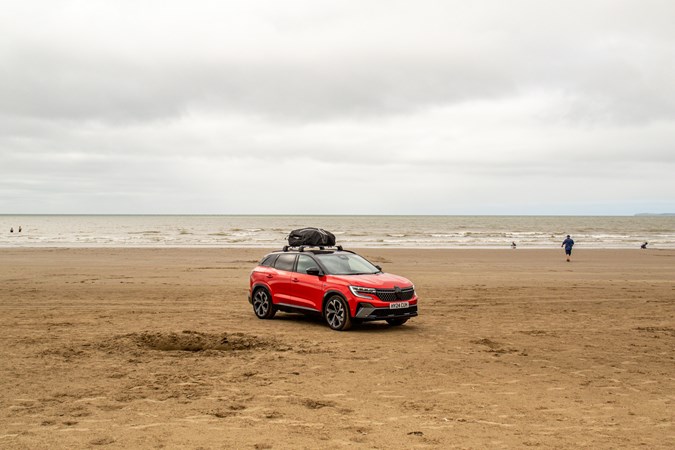
It’s also worth pointing out that the Austral might look like an SUV, but it is front wheel drive, and equipped with road tyres, so it’s just as likely to get stuck in the sand as a hatchback. Thanks to a gentle right foot (despite temptations) and the hard-pack nature of the beach, we didn’t need to use the on-site tractor to tow us out.
Cheerful detours aside, the remainder of the drive took place on smaller and smaller roads, which made me appreciate the two-screen set up in the Austral’s cabin. I’ll dive more into this in a subsequent update, but you can set it up so it displays the overall journey on the big screen (which the kids can see) and then turn by turn on the screen in front of you.
I’ve always loved this feature and it’s not always present – sometimes you have to have the same map on both screens and in other cars you can’t have an overview map at all. It’s also made a lot more attractive by the fact the main screen uses Google maps, so you can have a bright and clear satellite image and up-to-date travel news and diversions.
This certainly helped the kids keep an eye on journey progress, while I was able to see all the tricky directions and we got closer and closer to the campsite. With tempers in the back getting somewhat frayed, I was able to make use of one of the Austral’s smartest features – the mirror mounted to the sunglasses holder in the headliner.

I found this by accident because it’s actually a bit fiddly to use. You basically have to open the sunglasses cubby above your head, and then half close it. Then you get a wide panoramic mirror so you can keep an eye on what’s going on behind you without having to turn around, which is very useful indeed.
Arrived at the site and unpacked, the Austral felt like it had lost about 50% of its bodyweight and peaceful, serene progress had returned. It’s superbly quiet in normal running conditions and makes great use of its electric powertrain at low speed.
Altogether the Renault Austral was a breeze to take on our camping trip. Yes we had a roofbag to augment its carrying capacity and I think we’d have struggled to take everything we did plus an additional adult, but in reality had my wife come with us I’d have ended up taking much less stuff.
Not because of the aforementioned glamping argument, but because I ended up packing a load of stuff we didn’t need – just in case. Had Emma been with us the loadout would have been significantly more rational and would probably have taken up half the space it did.
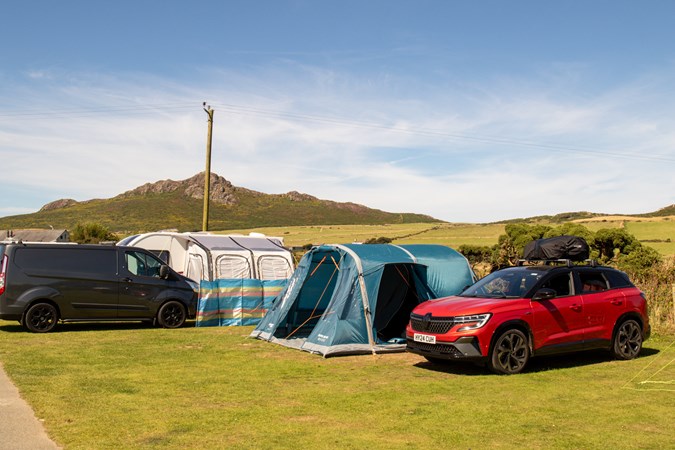
So I reckon it’s fine for a family of four, as long as you don’t pack like an absolute wally.
One final footnote. It’s fair to say I’m struggling to get used to the self-locking feature on the Austral. When you walk up to the car it unlocks without you having to press a button and does the opposite when you walk off.
In theory this is great, but it also means the car unlocks itself and flashes its lights at my neighbours every time I walk past my front door with the key in my pocket. And conversely, if I leave my wife and kids in the car momentarily (such as when paying for fuel) it will lock all the doors and then then alarm will go off, with no way of them being able to deactivate it.
You can turn this feature off but it’s genuinely quite useful, and I suspect you would get used to over time. But on our camping trip the alarm started going off randomly, which I put down to one of the doors not being shut properly when it tried to lock itself or maybe some of our stuff shifting around after we’d walked away.
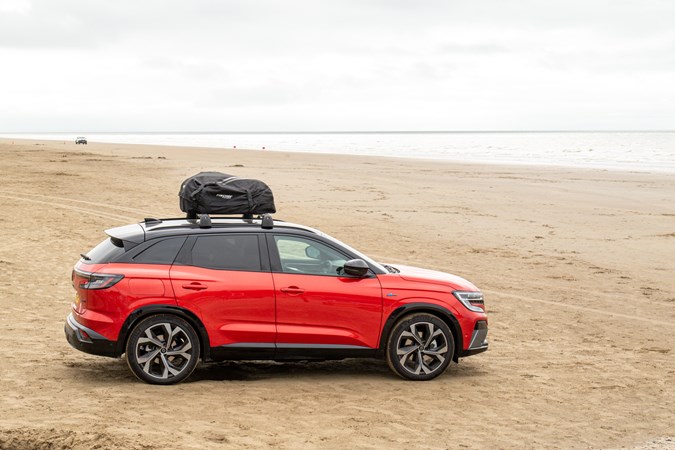
When it kept happening though I realised something wasn’t quite right and upon ringing Renault, was told it needed to come back to them for further investigation. That’s why from now onwards, you might notice that the colour of my car has changed from red to blue!
Update 5: Is the Austral a good family car?

Brace yourself – we need to talk all things bootspace and roof bars in this one. This is sort of the whole point of a long-term test though, is to ascertain how well a car works on a practical level, so really this is the one you’re most likely to find useful information in.
Over the past five months of ownership (of two cars, technically) I’ve put the Austral through the ringer in order to work out how well it functions as family transport. During that time, it’s revealed itself to be a flexible and capable companion, as you’ll have seen in the last update.
Out back is an average if not hugely impressive boot with 430-litres of space. It’s big enough for most things, and given the reasonable small footprint of the car, is a decent volume, all things considered.
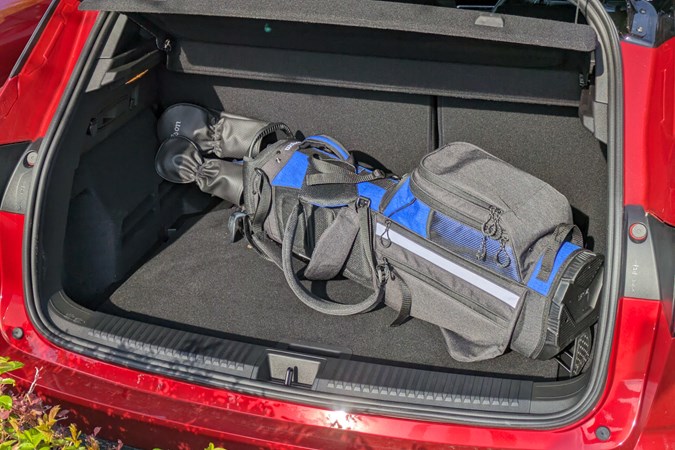
In terms of where it sits with rivals, it’s slightly larger than the Ford Kuga Hybrid, but much less capacious than the Kia Sportage and Toyota RAV4. This is assuming you’ve got the rear seats pushed all the way back though, because in the Austral they slide fore and aft.
Moved all the way forwards and you’ll unlock a new capacity of 555 litres – still less than the two cars above, but only marginally. And at this point your rear passengers will have no legroom at all.
In all honesty I didn’t find this feature all that useful. If you don’t always have two in the back and want to maximise luggage capacity, then it’ll be right up your street. If you’re usual four up, then it’s not such a good selling point.
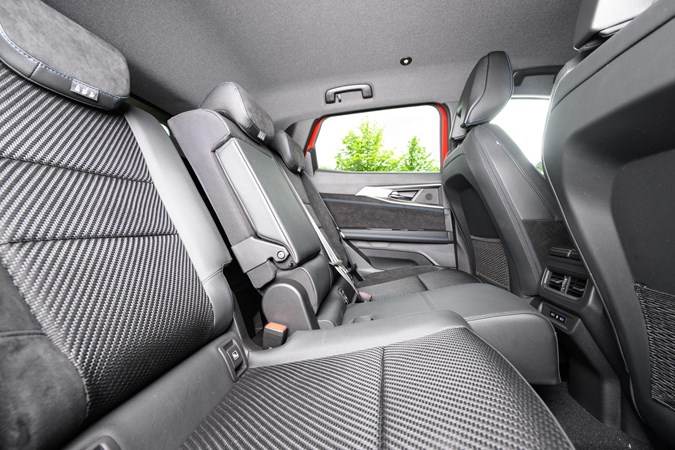
The tailgate opens electrically, and you can do this remotely on the key or by using a button from the driver’s seat. Despite many attempts to get my head around it, I still can’t work out what combination of things you need to do to get it to work first time, though.
For a start the switch rocks in an up and down motion, but on a single press sometimes it just beeps. I’ve tried holding it down and double-tapping it, and it’ll respond seemingly at random with either a beep or by actually opening the bootlid. If you know the secret then please get in touch.
There’s a similar story with the heated steering wheel icon on the touchscreen – I seem to have to jab at it multiple times to get it to come on. And more annoyingly, the gear selector stalk behind the wheel often needs a very firm waggle to ensure it actually moves from drive to reverse, or vice versa.
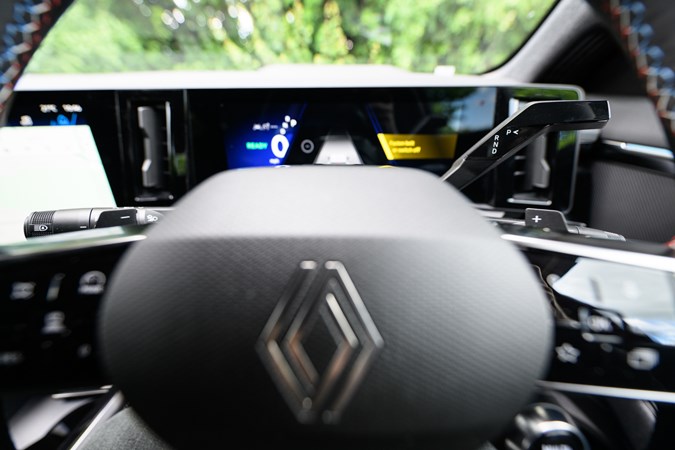
In terms of interior storage though there are plenty of places to stash things, not least a massive cubby under your left elbow, which has a sliding cover, the top of which is an inductive charger for your phone.
Ahead of this is a pair of cupholders, but unless your drinking vessels are very short, you won’t be able to slide the cover forward to get into the larger cubby, so that’s a bit annoying.
I do like the big handle on you use to slide the cover forwards and backwards though – it looks a bit like the thrust controls in a commercial aircraft. Probably a bit of a niche observation, that one.

A more mainstream comment about the interior is that it is objectively very well designed and constructed, with absolutely zero creaks and squeaks developing over my months of ownership.
It looks great too, I love the red, white and blue stitching on the wheel, the central screen is superbly bright and sharp, and the interior lighting is subtle but effective. You also get separate physical air conditioning controls so you can always tweak the heating without having to dive into a million menus.
In terms of tech, the Google-powered infotainment is the best integrated I’ve ever used. It hooks up to Android Auto immediately (wirelessly) and with zero faff. The stereo in my car is also very powerful and clear, and it’s not even the optional Harmon Kardon system.

As is customary in these updates, there will now follow a series of pictures of a car with a load of bikes on the roof. This is an essential function that any family transport has to fulfil in our house, and as my kids get older and their bikes get bigger, it gets more challenging for the car.
Renault will solve this problem for you with the £440 Cycle Pack, which includes two horizontal roof bars and two cycle carriers to attach to them. The bars themselves are extremely easy to fit, the feet slot over the Austral’s rails and then tighten down with a rotating clamp, no tools necessary. Then you can lock the covers over them to stop someone taking them off.
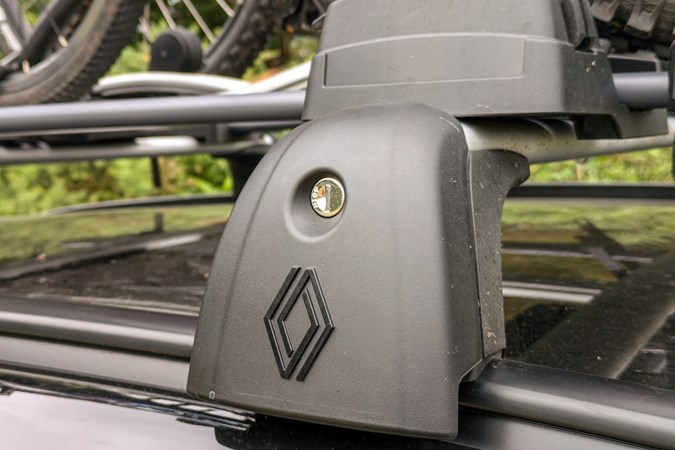
The cycle carriers are a bit more complicated, and you will need box wrench to secure them (although one is supplied in the kit). Once on the car though they are impressively slim and there was plenty of space left to slide two of my own Thule carriers on next to them.
When it comes to attaching bikes to them, the clamping heads are a bit different to others I’ve used, in that both sides tighten down equally and won’t let you keep over-tightening them, which is nice, and helps protect fragile carbon fibre tubes.

A bike rack gets a lot of use in my family, so I’ve ended up just leaving it on. This has had an effect on the wind noise in the cabin, it’s fair to say, and a fuel efficiency drop of about 6-8mpg. Both things are within acceptable limits.
To reach the bikes in the middle you will need to step up on the car’s sill, which is always a bit sketchy, especially if you have muddy or wet shoes. But that’s a small price to pay I reckon.
Update 6: Verdict
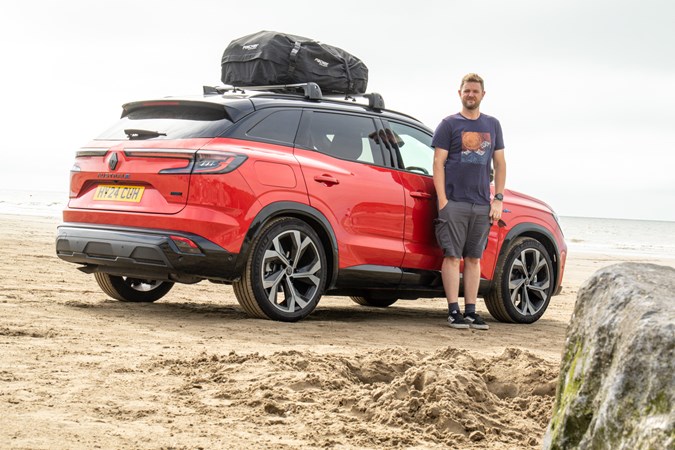
Time has run out for the Renault Austral, but will I be as gutted to see it leave as my last long termer?
Rewinding six months to the arrival of the Renault Austral and I remember two things – how annoyed I was to be waving goodbye to my Cupra Formentor, and how hot it was in the car park running between the two cars and my camera tripod.
It’s fair to say that this French SUV had a tough job on its hands, but it immediately won me over with its superb Flame Red paint. I said in my first update that it was actually my favourite ruby bodywork of all the red SUVs I’ve run for Parkers, and there has been many.
I can give the Austral no higher praise than to say it continued to impress me even when I swapped into a blue one halfway through (which if anything I thought looked even better than the red car), for reasons I will now set out.
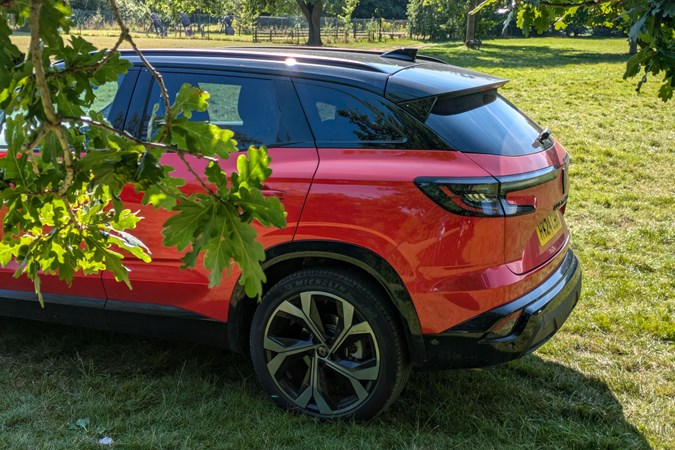
We’ve mentioned the looks already, but this is a handsome car, with lots of interesting details on the outside and an attractive, well laid-out interior. But not just that, the Google-powered infotainment system also just worked brilliantly all the time. No annoying disconnections mid-audio book on the motorway.
Renault has been using an upright central screen for years now and it never felt particularly well integrated or arranged before. But stacked alongside a horizontal driver’s screen, with a crisp and colourful map, I finally think it makes sense.
I also loved the physical air con buttons below it, because as much as I like an uncluttered interior, I also love being able to very quickly adjust the temperature without having to scroll through a million menus.
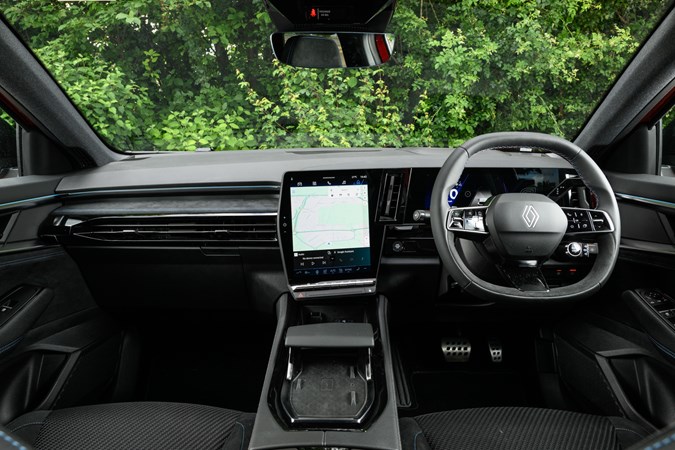
But my main focus during the Austral’s time here was on its clever drivetrain – a conventional hybrid with the promise of PHEV-level fuel economy. A balance of performance and frugality that I found very appealing indeed.
It certainly went well enough, which might seem like an odd priority in a family runaround, but when you’re already tired and stressed the last thing you want to be dealing with is a car that struggles to get up to motorway speed.
And in terms of MPG it also delivered – well – it would have, had I not strapped a bike rack to its roof. Before then I was regularly seeing high 40 to 50mpg, but this dropped to a low 40mpg average due to the extra drag on top.
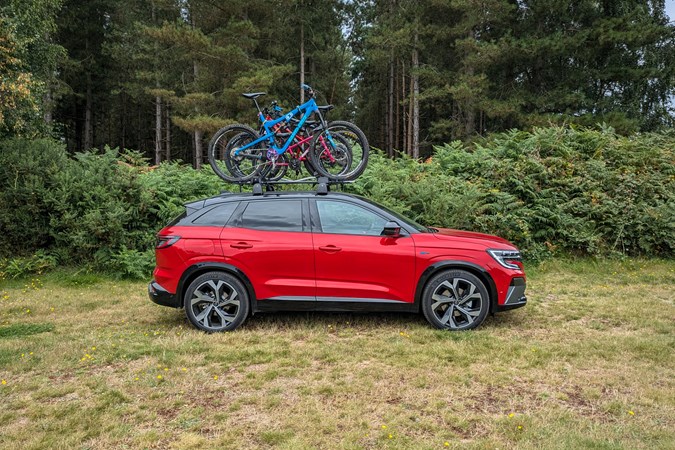
Clearly that’s not the car’s fault and it’s just a compromise I was (but you may not be) willing to make for the convenience of just being able to lob a bike on the roof when the need arose.
It turned out to be quite a practical car, all told, especially when we swapped the bike rack for a roof bag and took it camping. I won’t repeat myself here because there’s a whole update on this, but the Austral shrugged off the demands of a family holiday with ease.
It wasn’t all plain sailing of course – I found some of the controls needed a second or third prod to get them to work, and the brake pedal had a weird habit of moving around in regen mode. But other than that, I’ve got very little to complain about.
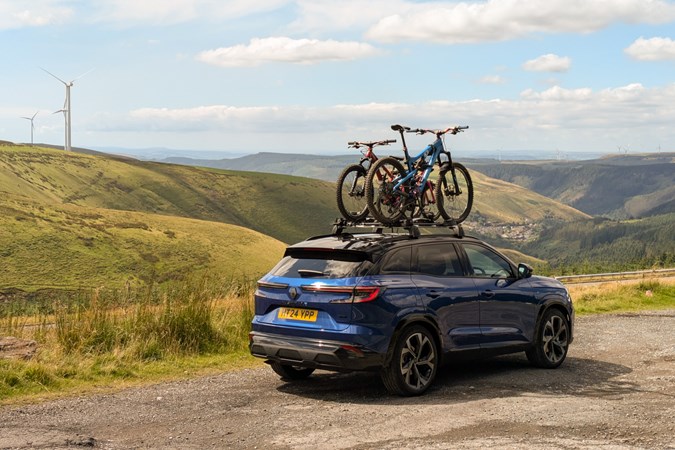
The Renault Austral reminds me a lot of the Skoda Kodiaq long termer I ran a few years back. Both cars do a lot of things very well, and those things happily aligned with my priorities at the time.
Much as I no longer need the Skoda’s occasion sixth and seventh seats, I suspect the Austral’s punchy but relaxing and cheap to run drivetrain is exactly what I need right now, but might not be in five years’ time.
Until then though I would happily recommend it if you want to get the maximum MPG from a petrol engine but don’t always have access to the plug a PHEV requires you to have.



